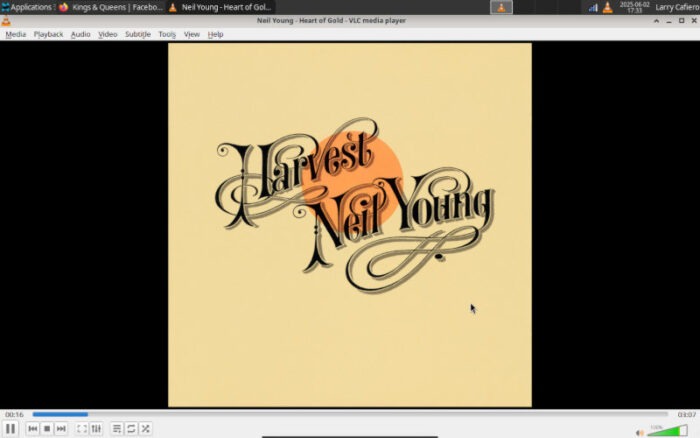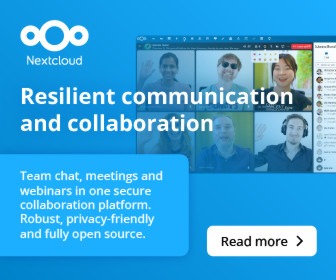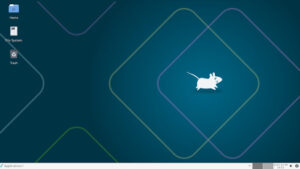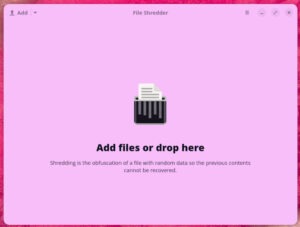The FOSS Force Distro of the Week — EndeavourOS
Our look at the popular Dutch Linux distribution EndeavourOS reveals an impressive distro that’s both easy to use and powerful enough for experienced users—thanks to its Arch Linux foundation.

If you could make a Linux distribution that could be all things to all people — spanning the canyon-wide gulf between simplicity for new users just cutting their teeth on Linux and satisfying even the grayest of Linux graybeards — how exactly would you accomplish that?
EndeavourOS may have the answer to that question.
EndeavourOS, a rolling release Linux distribution based on Arch Linux and developed in the Netherlands, released its latest version earlier this year. Originally code-named Mercury when it launched in February, the release was renamed Mercury Neo in March after a few bug fixes and improvements were added to the online installation option.
The distro is a direct descendant of Antergos, which launched in 2012. In May 2019, Antergos announced it was shutting down “due to certain issues within the team,” and a few of its former lead contributors launched EndeavourOS the following month. A month after that, an ISO was released. Since then, EndeavourOS has been downloaded around a half-million times and has a thriving worldwide community.

EndeavorOS’s Plethora of Desktop Choices
One of EndeavourOS’s main selling points is the choice between offline and online installation. Using its own fork of the Calamares installer in both instances, the offline option provides only the KDE Plasma desktop by default, while the online installation option lets you choose from GNOME, KDE Plasma, Xfce, Cinnamon, MATE, LXQt, Budgie, Deepin, and the i3 window manager.
The minimum specs for EndeavourOS should meet most people’s hardware criteria: 64-bit Dual-core Intel or AMD processor, 2–4 GB RAM (2 GB for lightweight desktop environments like Xfce, LXQt, and i3; 4 GB recommended for heavier environments such as GNOME, KDE, or Budgie), and 15 GB free disk space, which checks all the boxes on my ThinkPad T500.
Installing EndeavourOS
Meanwhile, back at the installation process, selecting a mirror to download the ISO file was straightforward. I opted for the online install and chose the Xfce desktop because it’s one I am most familiar with. If you try EndeavourOS using the online installation, simply select whichever desktop environment or window manager you prefer.
The installation went swimmingly well and better-than-average in the speed department. Once I rebooted, I was met with a Welcome screen that offered a variety of post-install options and tasks. These included updating repository mirrors (for both Arch Linux and EndeavourOS, since the majority of the distro’s software and system packages come directly from Arch), updating native packages, configuring package cleanup, changing the display manager or default wallpaper if desired, and accessing logs for troubleshooting. For Xfce, it offered the choice of either the Vanilla Xfce Theme or the default EndeavourOS Xfce Theme. I chose vanilla.
And voila, EndeavourOS is up and running.

Software Selection
EndeavourOS comes with a wide assortment of software, including Firefox, Parole Media Player, Rhythmbox, XTerm, and others. However, it does not include — wait for it — an email client by default, a gap I quickly filled by downloading Thunderbird. The Welcome screen features an “Add More Apps” button at the top right, making it easy to install additional software, so while I was taking the liberty of downloading an email client, I also downloaded VLC and the LibreOffice suite for good measure.
Oh, I also installed one more tool: the GNU Image Manipulation Program, or GIMP for short, which I use to edit photos before publication.
The downloads were exceedingly quick, thanks in large part to Pacman, the distro’s package manager. The commands are straightforward in the terminal (though I didn’t need to use them this time), and Pacman is reportedly more than twice as fast as other package managers like apt for essential operations.

First Impressions
Once all this was settled, it was off to work and play. As with all Arch-based systems I’ve tested, the software runs quickly and almost effortlessly. Neil Young sounded great on VLC while I wrote on LibreOffice Writer and played Sudoku on Facebook. Thunderbird worked flawlessly, and adjusting Xfce to match my long-standing preferences from Fedora Xfce was a breeze.
New Linux users should note that the EndeavourOS community is helpful and considerate, making the forums a valuable resource for newcomers. Additionally, the EndeavourOS knowledge base, Discovery, offers a wealth of articles and video tutorials to assist you in your quest to personalize your system.
On the whole, EndeavourOS gets high marks across the board, both for ease of use and flexibility. With Arch running under the hood, it appeals to new users and experienced Linux enthusiasts alike. Perhaps this is what all Linux distros should be about.
Endeavor OS’s pluses… |
Where Endeavor OS needs improvement… |
|---|---|
|
|
And suddenly we’re in the mood for Neil:







Thank you for reviewing EndeavourOS.
Just one thing I noticed. EndeavourOS does not offer Deepin as a desktop mananger.
It should be LXDE instead. EndeavourOS is also offered for the following ARM devices.
RPi 4b, RPi 5, Odroid N2, and Pinebook Pro.
Pudge
When I last tried it, I was impressed. But while impressive it suffered of the same slight problem as all the distros derived from Arch: it seems impossible to completely translate to ones preferred language. In my case French. The DE itself (in my case Cinnamon) is OK but the system itself is always still in English. The only distro that was spotless was Arch itself. But Arch, for me, is dry, very dry. Even if all your “locales” are saying French, the system behind the DE remains in English. Searching the web for a solution is proving utterly futile, nothing corrects this. Just a small annoyance but at length disturbing. So I end up going away. A pity…
“the system behind the DE remains in English.”
But what do you mean by “system”? The source code is of course in English because C and C++ and as far as I am aware all (?) programming languages are wriiten using English terms.
Are you arguing for a French language programming language?
Do you really want
pour i in 0 à 10
…
si (x est plus que 50) et (y est moin de 100)
…
pendant (i moins que j)
etc etc?
Surely if all your LOCALES are set appropriately and the translation units (po files) are available in that language then you will be presented with menus and dialogs (even most GNU command line utilities) in that language.
I am really liking EndeavourOS. I have tried Debian 12 or 12.1 but an update screwed up my old Intel 8th Gen laptop so have Linux Mint 22.1 on it now and it’s been doing good so far (have backups this time). I have it on a few computer and like it so far. I had to re-install a few times since I had that USBGuard installed and screwed it up at first and was just easier to re-install.
The writing was on the wall in the way they were talking about Win 10 and __especially__ about the Win 11 Recall feature and MS owning shares in “Open” AI. My Win 10 laptop got hacked and my Win 11 Pro laptop’s Admin account could not update a thing and was so corrupt it was useless, I could only update on my Limited account so MS was seriously pissing me off.
I have used YUMI over many years with some persistence but never actually really used it, but since it was easy I activated it for some distros. Then I moved on to Ventoy and I have A Lot of disto’s on there and I’ve tested a fair amount over the years. Use them to update my routers with https://www.asuswrt-merlin.net
I even put it on my Aunt’s 12th Gen Asus i5 laptop and it works great. Setup backups for her. She only has 8GB of RAM but it is still very fast, can put a 32GB stick in there, but not needed for her anyways.
On my 12th Gen Asus i9 I have 64GB RAM (came with 32GB but for VM options) and video card and it works so much better than Win 11 Pro ever did. That Asus Armory Crate is a POS software program and together with MS made it so sloooow. My Aunt’s slower i5 8GB was faster.
So EndeavourOS has been very good. Installing it was very, very easy. You get an online or offline option, I have done both. My 8th Gen has been acting up so I just got a 12th Gen Latitude and for sure putting on EndeavourOS ( EOS ) I just wish it was spelt like EndeavorOS, easier to remember 🙂 Especially when telling others.
I would highly recommend to take physical written notes for Arch ( EndeavourOS ) if you are new to it. Well for any OS, but it is different enough. The Arch Wiki is very helpful though just like the Ubuntu forums can be for Linux Mint ( found help from 2012 that helped ).
OK… What I meant is that the file manager that we use all the time is usually translated without problem but that, most of the time, the distro menu (including settings manager) are usually still in English. When we ask for the locales in a terminal we usually get all the lines in the answer indicating, in my case, fr_CA.UTF-8.
I look for help online and apply the setups for locale and get no luck, usually. Except on Arch itself. For some reason, on Arch itself I have no problems with locale. But Arch is a “dry” distro, i.e. you have to install manually everything you need and by the time I nearly get there, I usually have enough and move on.
Now, I have no problem with English per se, but it’s just a nagging problem that make me lose interest after a while. Like I said: nothing big, just annoying.
@François: I had no problems in complete localizing my system, maybe some step was missing?
What does `locale –all-locales` show? Is `fr_CA.UTF-8` included?
Did you uncomment `fr_CA.UTF-8` in the file `/etc/locale.gen`?
Did you then run `sudo locale-gen`?
Did you then run `sudo localectl set-locale LANG=fr_CA.UTF-8`?
(Or modify `/etc/locale.conf` accordingly.)
For some applications like Firefox, LibreOffice, GIMP, you might need to install their separate language packages, respectively. Possible examples are:
“`
aspell-fr
firefox-i18n-fr
gimp-help-fr
hunspell-fr
hyphen-fr
libreoffice-still-fr
mythes-fr
“`
Hope your interest comes back with these, hopefully not-anymore-annoying, changes! EndeavourOS is certainly worth it.
Thank you for this answer. Of course, upon a new installation every thing went A-OK and there is no problems at all with locales. No idea if I did anything different. Figures…
Regards
François Proulx, Longueuil, Québec, Canada